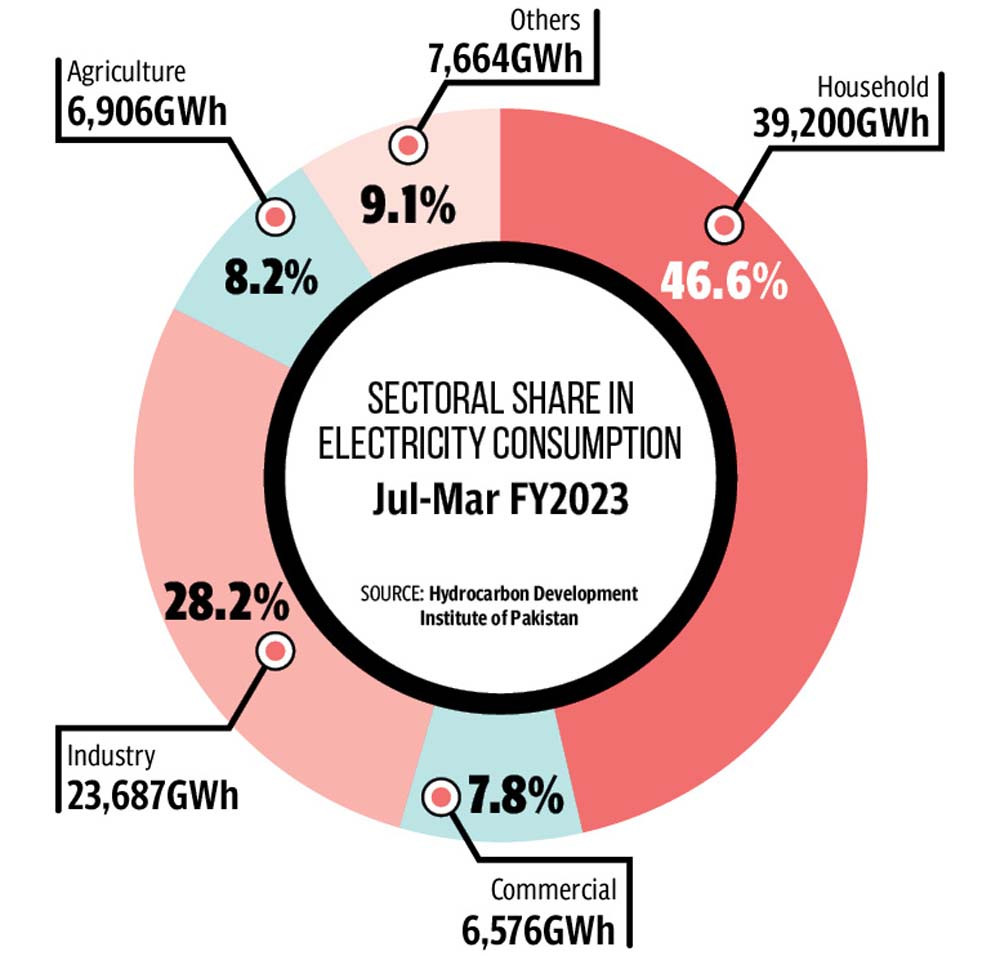Smuggling, weak economy sap oil demand
Consumption of petroleum products drops 22% to 13m tonnes in Jul-Mar FY23

Pakistan saw a massive decline in demand for petroleum products as it fell 21.9% in July-March of current fiscal year, revealed the Pakistan Economic Survey 2022-23.
Energy experts blamed weak demand on excessive smuggling of petroleum products from Iran, lethargic economic activities, restrictions on opening Letters of Credit for imports and rising oil prices.
Petroleum product prices soared to an all-time high in Pakistan’s history during the outgoing financial year 2022-23.
The smuggled Iranian petroleum products flooded Pakistan’s market, which forced local oil refineries to slash production as consumer demand contracted.
According to the Economic Survey, released by Finance Minister Ishaq Dar on Thursday, the overall demand for petroleum products dipped 21.9% to 13.1 million tonnes in the first nine months (July-March) of FY23 compared to 16.7 tonnes in the same period of FY22. For full last fiscal year, the demand came in at 23.1 million tonnes.
The declining trend may be attributed to the decrease in demand for furnace oil, high-speed diesel (HSD), motor spirit (petrol) and high octane blended component (HOBC). These products account for more than 95% of total demand.
Only jet fuel (JP-1 and JP-8) registered an increase in consumer demand, which grew 18% in the period under review.
Among consumers, transport and power sectors were major categories, covering around 90% of total demand.
The decrease in motor spirit and HSD consumption may be linked to high prices and the decline in furnace oil consumption stemmed from the shifting of power generation plants to re-gasified liquefied natural gas (RLNG)/ coal and other alternative sources.
Being a net importer of petroleum products and crude oil, Pakistan imported 6.1 million tonnes of oil products, valuing at $5.7 billion, in July-March FY23.
These included 3.85 million tonnes of motor spirit, 1.64 million tonnes of HSD and 530,000 tonnes of furnace oil. Pakistan’s reliance on furnace oil for power generation dropped and only 530,000 tonnes were imported against 1.32 million tonnes in July-March FY22.
The crude oil import requirement of refineries remained at 5.86 million tonnes against 6.8 million tonnes last year.
Gas sector
The locally produced natural gas supply contributed about 29.3% (FY21) of the country’s total primary energy mix.
Pakistan has an extensive gas network of 13,775 km of transmission, 157,395 km of main and 41,352 km of services pipelines to cater to the requirement of more than 10.7 million consumers.
During July-March FY23, the average natural gas consumption was about 3,258 million cubic feet per day (mmcfd), including 631 mmcfd of RLNG.
During the same period, the country’s two gas utilities (Sui Northern Gas Pipelines Limited and Sui Southern Gas Company) laid 225 km of transmission network, 1,170 km of mains and 63 km of services lines, and connected 92 villages/ towns to the gas network.
Furthermore, 7,102 additional gas connections (including 5,068 domestic, 1,948 commercial and 86 industrial) were provided nationwide.
Natural gas is expected to be supplied to approximately 520,801 new consumers (the target is subject to approval/ revision by Ogra) during FY24.
In addition, the gas utilities have planned to invest Rs38,674 million in transmission projects, Rs47,700 million in distribution projects and Rs9,416 million in other projects, bringing total investment to Rs95,790 million in FY24.

Electricity
The country’s total installed electricity generation capacity stood at 41,000 megawatts, where the percentage share of hydel was 25.8%, thermal 58.8%, nuclear 8.6% and renewable 6.8%.
The share of thermal as a dominant source of electricity supply has declined over the past few years, signaling increased reliance on indigenous sources.
On the other hand, against the total electricity generation of 94,121 gigawatt-hours (GWh), the share of hydel, nuclear and renewable was a combined 53.8%, which “is a good sign for the economy and the environment”, according to the Economic Survey.
Power consumption
During July-March FY23, total electricity consumption was 84,034 GWh. Of this, the household sector was the largest consumer, consuming 39,200 GWh (46.6%), followed by the industrial sector with 23,687 GWh (28.2%).
Moreover, the agriculture and commercial sectors consumed 6,906 GWh (8.2%) and 6,576 GWh (7.8%), respectively, whereas the electricity consumption in other sectors (streetlights, general services, and other government) was 7,664 GWh (9.1%).
Mineral sector
During July-March FY23, coal consumption by the power sector came in at about 47.3% (7.29 million tonnes), whereas in cement and other industries, it stood at 31.1% (4.80 million tonnes). On the other hand, brick kilns consumed 21.5% (3.32 million tonnes).
Published in The Express Tribune, June 9th, 2023.
Like Business on Facebook, follow @TribuneBiz on Twitter to stay informed and join in the conversation.



















COMMENTS
Comments are moderated and generally will be posted if they are on-topic and not abusive.
For more information, please see our Comments FAQ